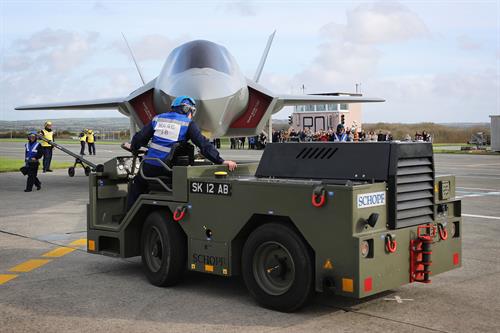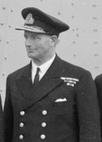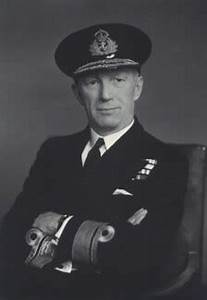
So, it's Friday and the sandcastle guy is gonna talk about aircraft carriers again.
I thought it would be worth it, in the general context of the recent rumors surrounding the QE Programme, the upcoming Defence White Paper and various social media reactions to the above./1
I thought it would be worth it, in the general context of the recent rumors surrounding the QE Programme, the upcoming Defence White Paper and various social media reactions to the above./1

I hope that the last several years spent outlining why these ships, and other aircraft carriers, are the way they have percolated through to my audience.
That said, there are still a great many people who seem convinced that the whole programme is a delusional nonsense./2
That said, there are still a great many people who seem convinced that the whole programme is a delusional nonsense./2

Clearly, if you've followed me for any length of time then you'll know that I disagree with that view. Having studied the subject for a good while I have come to the conclusion that aircraft carrying warships remain very useful implements for defence and wider UK state policy./3
Discussions in the wider social media arena around the ships' air group appear to be operating under the assumption that the QEC were intended to operate with their flight deck looking something like this./4 

It seems as if we need to have a discussion about what CV decks actually look like under real world operational conditions, as well as what the constraints on the number of aircraft you'd want to embark for live operations are.
Operational flight decks don't look like this:
/5
Operational flight decks don't look like this:
/5

Aircraft carriers, fundamentally, have two places they can put their aircraft. In the hangar, or on the deck - in the various zones that make up the "deck park"./6 



In order to move aircraft from the hangar to the deck, and vice versa, you have deck elevators. The QE Class have two elevators (able to move 2 F-35s at a time) on their Starboard side. The previous generation of light carriers had two much smaller elevators on the centreline./7 



The QE's hangar can, when fully loaded, accommodate about 24 F-35B sized aircraft. Obvservent readers may notice that the hangar pictured below is beginning to look rather cramped./8 

In order to move aircraft around the ship, to get them to where they're needed, you have teams of aircraft handlers and aircraft towing tractors. When on deck aircraft can also be moved between certain positions under their own power./9 



This is where we return to the issues with that very full, cramped, hangar. Once you embark enough aircraft, where they're put starts to become very important indeed. It becomes a giant puzzle of aircraft movements.
e.g. How many would need to move to get this jet on deck?/10
e.g. How many would need to move to get this jet on deck?/10

This is where deck efficiency and intended air group sizes come in.
The QE Carriers are perfectly capable of embarking in the region of seventy F-35B sized aircraft. However, as we may realise if we've been paying attention this is a very bad idea./11

The QE Carriers are perfectly capable of embarking in the region of seventy F-35B sized aircraft. However, as we may realise if we've been paying attention this is a very bad idea./11


Jamming the deck and hangar with so many aircraft means that you reduce the number of free spots you can use to shuffle aircraft around. The puzzle becomes exponentially harder. You need to use ever more moves in order to get things where you want them./12
This is bad for a couple of reasons. Firstly, because it takes time and degrades how quickly your ship can launch and recover, fuel, arm and strike aircraft down into the hangar. Your sortie rate, the number of aircraft that go out and come back in a set period, is degraded./13 

The other reason is that you need people and kit, in the form of aircraft handlers and tractors, to perform all these additional movements. Every carrier only has a finite number of these. The more jammed your aviation spaces are, the more movers you'll need./14 

As such, the QE Class were designed to operate up to around 40 aircraft *efficiently*, including helicopters. Because the ships are large it allows them to use their avaition spaces more efficiently, because there's supposed to be a bit of "spare room"./15 

For those complaining that the QEs will rarely be sailing about with 36 jets and 4 Merlin CROWSNEST helicopters embarked I would like to highlight that this is more or less the QEC's 'maximum strike configuration', which would involve significant deck parking./16
If you've been at sea around the UK you might understand that the Royal Navy's usual stomping ground for training and NATO activities can be "a little unpleasant" in terms of the elements at times. Do we *really* want a dozen F-35s sat on deck in this all that often?/17 

It's no secret that the size of the QEs also allows them a little more freedom to operate in heavy weather conditions, providing a more stable platform than smaller avition ships. You wouldn't want to have to try and land on a ship doing this, for example./18 

It's also been a rather trendy take to solely focus on the number of F-35s in the air group, when the ~40 efficient maximum total always included helicopters (There were still a number of Merlins included in the maximum strike oriented package)./19 

The air group's rotary component is far from a vestigial addition, or 'simply there to make up the numbers'. Merlin Mk.2 and Wildcat perform a critical functions as the Carrier's extended anti-submarine protection. Merlin CROWSNEST acts as its persistent early warning sensor./20 

The Merlin Mk.4 is present in the group as its Maritime Intra-Theater Lift (MITL) asset, which is otherwise known as 'Carrier Onboard Delivery'. Moving critical stores over long distances from shore - ship and vice versa, as well as transporting personnel or troops./21 

While the group's helicopters have the advantage of being able to disperse amongst the carrier group's other units - frigates, destroyers and fleet auxiliaries - the best place to do intensive maintainance or repairs will likely remain the carrier./22 

The reasons why the Royal Navy opted for a medium-sized aircraft carrier design of 65,000 tonnes are, in my view, rooted in its extensive experience of operating smaller aviation ships over a period of more than thirty years./23 



The aforementioned issues with deck efficiency, notional maximum air group sizes versus what was actually possible under real world conditions meant that small carriers usually underperformed in relation to contemporary medium designs compared with the investment./24
The impression that UK policymakers went a bit crazy and built a US-style carrier that we could never afford to put any aircraft on is wrong. QE is not a Nimitz/Ford, she was never intended or designed to be that and isn't bad because of it./25 

I think I'll round out here by saying that, overall, the UK continues on the path towards a very tidy, and sensible, aircraft carrier capability for a country in its position. The QE programme has produced an efficient medium aircraft carrier design./26
While it's being brought into service with a baseline level of capability this will, in all likelihood, continue to develop and change to best suit the needs of defence over time. As all UK carriers have through their service lives./27 



Engaging Strategy, Out.
Also, because it's my thread and I can do what I want.
This is not where you put deck elevators.
Engaging Strategy, Over and Out.
This is not where you put deck elevators.
Engaging Strategy, Over and Out.

• • •
Missing some Tweet in this thread? You can try to
force a refresh
























